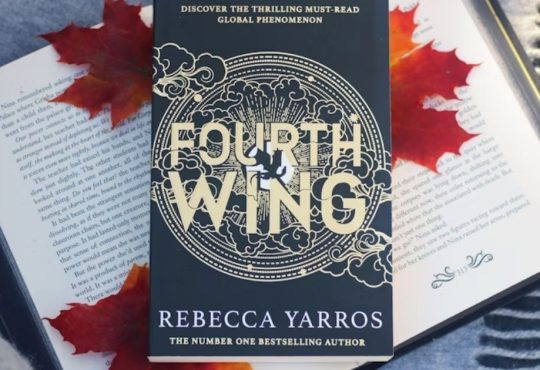In an age where everything feels digital, fast, and fluorescent, many Millennials and Gen Zers choose to live in sepia tones. With roots in 19th-century Gothic literature and Ivy League tradition, Dark Academia is more than a Pinterest board—it’s a cultural movement that blends philosophy, fashion, literature, and identity into one visually rich and emotionally introspective experience.
But why does it enchant these younger generations so much? What’s behind the longing for candlelit libraries, Latin phrases, and handwritten poetry? This isn’t just a passing trend—it’s a reflection of more profound generational shifts, values, and needs.
What Is Dark Academia?
At first glance, Dark Academia might seem like another moody aesthetic trend sweeping social media. But peel back the layers, and you’ll find a richly woven subculture built on an enduring love for classical education, vintage elegance, and the timeless pursuit of intellectual depth. It’s an aesthetic but also a state of mind, a lifestyle, and in many ways, a quietly poetic rebellion against the noise of modern life.
Dark Academia draws heavily from the worlds of Gothic literature, Renaissance art, classical philosophy, and the early 20th-century academic elite. Imagine candlelit libraries with ancient tomes stacked to the ceiling, the scent of old paper lingering in the air. Picture Oxford shoes echoing through marble hallways, tweed coats pulled tight against autumn winds, and handwritten notes scrawled in leather-bound journals with quills—or at least, a Montblanc pen. A space where the intrigue of The Secret History, the solemnity of Dead Poets Society, and the wistful tone of a moody Tumblr archive converge into a richly introspective realm.
The Hallmarks of Dark Academia’s Visual and Emotional Palette:
- Ivy-covered universities and gothic stone architecture are often borrowed from prestigious institutions like Oxford and Cambridge or fictional facsimiles like Hogwarts.
- Dimly lit dorm rooms with stacks of books, wax-sealed letters, framed portraits, and dusty curtains drawn halfway against rainy skies.
- Symbolic rituals: reading by candlelight, sipping strong black coffee during sunrise study sessions, and romanticizing the mundane aspects of Academia like exam stress or overthinking a poem.
- Aesthetic staples: cable-knit sweaters, trench coats, vintage blouses, wool trousers, plaid skirts, and leather satchels, often in hues of brown, burgundy, forest green, and sepia.
- Core themes: obsession with mortality, existential dread, doomed friendships, forbidden love, and the ache of unrequited intellectual passion.
But beneath the polished loafers and curated bookshelves lies something more than an Instagram-worthy lifestyle. Dark Academia is deeply tied to a romanticized notion of knowledge and introspection—a yearning for a time when engaging with literature, art, and philosophy wasn’t just a school requirement but a spiritual pursuit. It evokes an era when learning felt like a sacred act—when reciting Shakespeare in a candlelit attic or debating Nietzsche at midnight was more than a cliché, it was the heartbeat of youth searching for truth.
In this way, the aesthetic becomes a self-styled mythology. Followers of Dark Academia aren’t just dressing like intellectuals—they’re performing intellectualism as an art form. They’re crafting a personal world in which curiosity, critical thought, and emotional intensity are not just valued—they’re exalted.
So while it may begin with a mood board or a playlist titled “studying in an ancient library during a thunderstorm,” Dark Academia quickly becomes something more profound: a visual language for those who feel most alive when they’re reading, writing, questioning, or mourning the loss of a more reflective era.
Why Dark Academia Feels So Right for Gen Z and Millennials
1. Escapism in a Chaotic World
For Millennials and Gen Z, coming of age has felt less like a rite of passage and more like trying to read poetry in the middle of a thunderstorm. This generation has inherited a world tangled in crises—climate change, political instability, rising inequality, economic precarity, and a digital culture that never sleeps. The promise of a better future feels increasingly blurry, and the emotional toll of existing in “always-on” mode is impossible to ignore.
Amid this chaos, Dark Academia offers a retreat, not into oblivion, but into depth. It’s a slow-burning aesthetic that glorifies introspection, quietude, and deliberate thought. Amid the noise of hustle culture demanding constant productivity, Dark Academia offers a quiet invitation to slow down and reflect. It urges young people to value the thinking process rather than the outcome, and reading an obscure Greek tragedy to feel something, and writing a letter with ink and wax, even though you could text in seconds? In Dark Academia, those acts aren’t indulgent—they’re revolutionary.
This is escapism with soul. It doesn’t ask you to ignore the real world but invites you to reimagine your place through books, ideas, and intentional living. For many, especially those burnt out by screen fatigue and algorithmic overload, it’s a way to reclaim their sense of presence. Dark Academia turns solitude into sanctuary. It says: yes, the world is on fire—but here is a passage from Rilke that might soothe you for a while. Here is a handwritten page of your thoughts that no one can like or comment on, but it still matters.
In this way, the aesthetic becomes a form of emotional self-defense—a quiet rebellion against a world that often feels too loud and fast. It’s not escapism for escapism’s sake; it’s about finding stillness with meaning, presence with depth, and refuge in the richness of your own inner life. Amid chaos, Dark Academia permits one to step back—not to disconnect entirely, but to reconnect differently.
2. Fashion and the Language of Identity
Dark Academia fashion presents one of the aesthetic’s most recognizable forms, marked by vintage blazers, pleated trousers, and a palette of dark neutrals. The look is built on layering, texture, and timeless tailoring, channeling the essence of a poet, scholar, or introspective thinker rather than chasing seasonal trends.
This style functions as a means of identity construction, often leaning into androgyny and inclusivity. Once steeped in elitist, Eurocentric traditions, the aesthetic is now being reshaped by diverse creators—including BIPOC and LGBTQ+ voices—who are infusing it with new perspectives. The result is a fashion language that honors intellectualism while actively dismantling its historical gatekeeping. In this context, Tweed becomes more than heritage—it becomes purpose.
3. Books as Portals to the Soul
Books are the foundation of the Dark Academia aesthetic, with literature functioning as a vehicle for introspection rather than diversion. Themes such as death, desire, longing, isolation, and brilliance permeate works such as Donna Tartt’s The Secret History, M.L. Rio’s If We Were Villains, Greek tragedies, Romantic poetry, and existential philosophy.
These texts transcend storytelling, offering emotional depth and philosophical insight that prompt deeper contemplation. In a culture defined by digital fragmentation and constant stimulation, reading is a purposeful act—deliberate, reflective, and anchored in the timeless search for meaning.
4. Social Media and the Aestheticization of Intellect
Ironically, one of the most analog aesthetics thrives on the most digital platforms. TikTok, Tumblr, Pinterest, and Instagram have become massive vehicles for Dark Academia content—from outfit inspiration and bookshelf tours to aesthetic study montages and moody poetry recitations.
Why is it successful online? It curates a world that feels idealized yet attainable. The aesthetic encourages viewers to romanticize their everyday routines: studying by candlelight, journaling under soft lamplight, walking through fallen leaves in loafers. It adds meaning to the mundane and ritual to the routine.
There’s a bit of theater to it, too. For many, it’s not just a way of dressing—it’s a performance of identity that feels aspirational and deeply personal.
5. Reclaiming Education
Dark Academia resonates as a reflection of a more profound yearning for education unspoiled by commercial interests. In a landscape where learning has become increasingly transactional—marked by rising student debt and shrinking support for the arts—this aesthetic reasserts the belief that knowledge holds intrinsic worth beyond financial return.
It poses a quiet yet powerful challenge to modern norms: learning as sacred, curiosity without commodification, and meaning rooted in existence rather than accomplishment. In this light, Dark Academia functions as a subtle act of resistance—an embrace of intellectual pursuit for its own sake, not as currency for career advancement.
The Inclusive Future of Dark Academia
Dark Academia is no longer confined to the shadows of old libraries and ivy-covered institutions—it’s undergoing a transformation that reflects a broader, more inclusive worldview. While the aesthetic once leaned heavily on Eurocentric ideals and the romanticization of elite Western education, a shift is underway. Diverse creators and thinkers challenge these origins, expanding the aesthetic to include a rich tapestry of global voices and cultural contexts.
Literature lists now highlight works by Black, Indigenous, Asian, and other historically marginalized scholars. Personal style within the aesthetic blends traditional academic elements with regional textiles, heritage symbols, and contemporary cultural references. This modern take on Dark Academia values self-directed learning, emotional depth, and the freedom to define one’s intellectual identity. Ivy walls and dusty tomes are no longer prerequisites—curiosity, critical thinking, and the quiet strength of self-expression now shape the evolving face of this once-narrow tradition.
The Beauty of Thought in a Noisy World
At its heart, Dark Academia is a love letter to learning, a celebration of introspection, and a rebellion against the superficial. For Millennials and Gen Z, it’s more than a mood—a movement rooted in meaning. It’s about slowing down, digging deep, and reconnecting with the beauty of thought.
So the next time you see someone journaling in a café with a stack of worn books and a faraway look in their eyes, don’t assume they’re just performing an aesthetic. They might be living—one that’s helping them survive, dream, and feel a little more human in a noisy, pixelated world.





